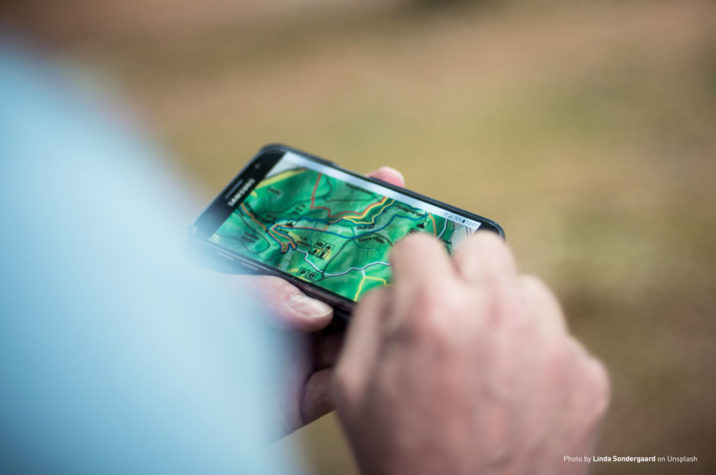By Sean Leslie
Have you resolved to spend less time on your digital devices in 2020? The outdoors is a great place to judiciously put that resolution into effect.
When you imagine the adventures of historically famous outdoorsmen—Lewis and Clark, Daniel Boone, James Bowie, John Muir—you likely don’t imagine them pulling out their iPhone to consult Google Maps, post a picture to Instagram or check their text messages. Some might consider the idea of outdoor adventure combined with that kind of cutting-edge technology blasphemous, even in the modern world. “The outdoor experience should be device free!” is a common refrain.
Americans spend on average six-and-a-half hours online every day
But even historic adventurers utilized the cutting-edge technology of their time to aid in and enhance their travels. For example, Lewis and Clark relied upon the chronometer, a predecessor to the modern watch that also determined their party’s location, and the camera obscura, an early type of camera, to share their discoveries with the world.
Today, nearly everyone has access to technology that can pinpoint their exact location, take and store high-quality color photographs, communicate with people virtually anywhere in the world, play music and perform countless other tasks crucial to modern life. And what’s more, all these tasks can be performed by a single piece of technology that’s small enough to fit in your pocket—a modern mobile phone.
As the size of electronic devices continues to shrink and their portability improves, more and more of us are carrying our mobile phones—with all their built-in gadgets and functions—wireless headphones, GPS-equipped watches and other gizmos into the woods. Depending on how these devices are used, the results can be either beneficial or detrimental to the outdoor experience, both for the user and for anyone else he or she may encounter on their adventures.

Tech can improve our outdoor experiences, when used respectfully and responsibly.
Of course, issues arise when technology is used disrespectfully and/or irresponsibly in the outdoors. For example, playing music from a Bluetooth speaker clipped to your backpack, mounted to the frame of your mountain bike or at a public campsite is about as disrespectful as you can get; nobody wants to hear that music aside from you. In fact, many people are likely venturing into nature to escape from the digitized annoyances of everyday life, your music included. Beyond that, if you really want to hear music in the woods, using headphones ensures you won’t negatively impact anyone else’s outdoor experience. But when used respectfully and responsibly, a large assortment of this modern technology can improve our outdoor experiences and improve the safety of our adventures; think about apps that report on trail conditions using crowd-sourced data, GPS location services that could potentially help locate a lost hiker, or the ability to capture a stunning vista to share with your friends and family, perhaps inspiring them to spend more time outdoors or go on their own adventures.

Resolved to spend less time on your devices in 2020? Put it into practice outside.
At this time of year, in our modern world, you’ll likely have a friend or two tell you they’ve made a resolution to spend less time on their digital devices. Perhaps you’ve made the same New Years’ Resolution yourself. (Considering Americans spend on average six-and-a-half hours online every day, it’s probably not a bad idea.) If so, the time you spend in the outdoors might be the perfect place to put this resolution into effect.
Perhaps you can go for a hike while resisting the need to check your text messages or emails, instead enjoying the reprieve from the constant barrage of digital communication and fully appreciating the natural world around you. Or you can head out for a trail run without streaming music from your phone; instead, absorb the sound of the landscape, the noise of your shoes striking the dirt beneath your feet, and—in the case of this writer—your own deafening heavy breathing.
We’re not suggesting you never take your digital devices with you into the outdoors; taking your phone on solo hikes or runs is, frankly, a great way to improve your safety. But if you’re attempting to reduce your reliance on gadgets, gizmos, screens and other types of technology, there’s nowhere better to give it a go than your outdoor adventures.
Happy 2020. Now get out there and enjoy it!

